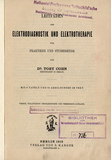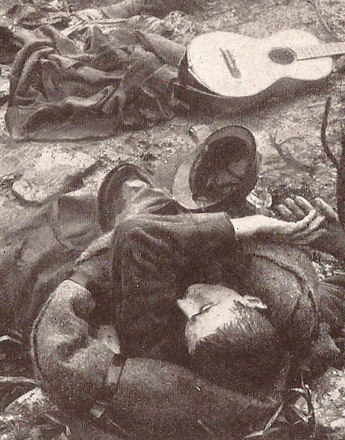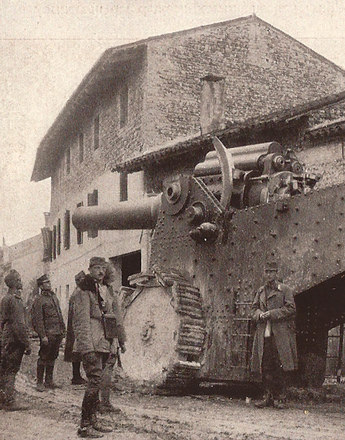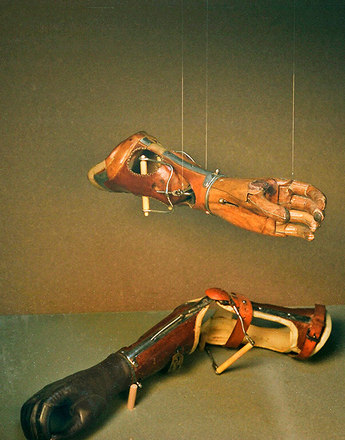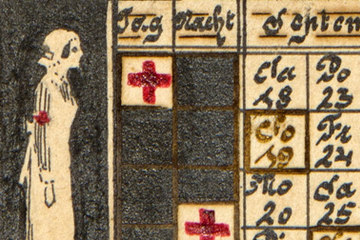Mental disturbances to soldiers were widespread in all countries involved in the First World War. There were nevertheless national differences in the way mentally damaged soldiers were treated.
Whereas German military psychiatrists preferred hypnosis, electrotherapy was the treatment of choice by French and Austro-Hungarian neurologists. This form of treatment was also practical in the multilingual Habsburg Monarchy as it could be administered without speaking. With hypnosis and other suggestive procedures the Austro-Hungarian psychiatrists would have needed an interpreter to treat patients from other parts of the empire.
Even within Austria-Hungary there was no standardised treatment. While neurologists in Graz preferred rest, balneology, dietary measures and crafts, the Viennese hospitals favoured electric shock therapy. The main aim of all therapies was not the complete recovery of the patients but rather the restoration of their ability to serve at the front – not least as they were often suspected of shirking. The war neurotic was permanently under suspicion of simulation, hence the extremely brutal treatment methods.
The "Kaufmann cure", named after its developer, the German psychiatrist Fritz Kaufmann, was one of the commonest methods for treating emotionally damaged soldiers in the First World War. It was an extremely painful procedure combining suggestion, military drill and electric torture. The mentally ill patients were given electric shocks using Faradic stimulation. If the current applied to the body had no effect, the current was increased by placing the electrodes on the nipples or genitals. Doctors were convinced of the efficacy of the treatment. The electric shocks made the trembling and twitching disappear and forced patients to "flee to health". Although the "Kaufmann method" caused a number of deaths, it was the commonest treatment in Austrian psychiatric hospitals.
In the eyes of psychiatrists the war did not cause the nervous disorders but rather triggered a pre-existent nervous or emotional predisposition. The view that war neurotics were inferior 'degenerates' or with "weak nerves" was popular with military psychiatrists, hence the unrestrained use of painful electric shock therapy. This torture was designed not to combat 'genuine' symptoms but to unmask simulators and shirkers. By using brutal electric shock treatments, which may be seen as a disciplinary rather than a therapeutic method, the treating neurologists were clearly placing war interests over the wellbeing of their patients. They became, in Sigmund Freud’s words, "machine guns behind the front", which sent the traumatised soldiers back to the fight. When it became known that the painful treatment did not have the desired effect of getting sufficient emotionally disturbed soldiers back to the front, public opposition to the electric shock therapy increased, culminating in the prosecution and acquittal after the war of the psychiatrist Julius Wagner-Jauregg.
Translation: Nick Somers
Hofer, Hans-Georg: Effizienzsteigerung und Affektdisziplin. Zum Verhältnis von Kriegspsychiatrie, Medizin und Moderne, in: Ernst, Petra/Haring, Sabine A./Suppanz, Werner (Hrsg.): Aggression und Katharsis. Der Erste Weltkrieg im Diskurs der Moderne, Wien 2004, 219-242
Hofer, Georg: „Nervöse Zitterer. Psychiatrie und Krieg, in: Konrad, Helmut (Hrsg.): Krieg, Medizin und Politik. Der Erste Weltkrieg und die österreichische Moderne, Wien 2000, 15-134
Hofer, Hans-Georg: Was waren „Kriegsneurosen“? Zur Kulturgeschichte psychischer Erkrankungen im Ersten Weltkrieg, in: Kuprian, Hermann J. W./Überegger, Oswald (Hrsg.): Der Erste Weltkrieg im Alpenraum. Erfahrung, Deutung, Erinnerung. La Grande Guerra nell’arco alpino. Esperienze e memoria, Innsbruck 2006, 309-321
Schwarz, Peter: „Die Opfer sagen, es war die Hölle.“ Vom Tremolieren, Faradisieren, Hungern und Sterben. Krieg und Psychiatrie in Wien, in: Pfoser, Alfred/Weigl, Andreas (Hrsg.): Im Epizentrum des Zusammenbruchs. Wien im Ersten Weltkrieg, Wien 2013, 326-335
Quotes:
"flee to health": Eissler, Kurt R.: Freud und Wagner-Jauregg vor der Kommission zur Erhebung militärischer Pflichtverletzungen, Wien 1979, 53, quoted from: Schwarz, Peter: „Die Opfer sagen, es war die Hölle.“ Vom Tremolieren, Faradisieren, Hungern und Sterben. Krieg und Psychiatrie in Wien, in: Pfoser, Alfred/Weigl, Andreas (Hrsg.): Im Epizentrum des Zusammenbruchs. Wien im Ersten Weltkrieg, Wien 2013, 329 (Translation)
"machine guns ...": Sigmund Freud, in: Eissler, Kurt R.: Freud und Wagner-Jauregg vor der Kommission zur Erhebung militärischer Pflichtverletzungen, Wien 1979, 53, quoted from: Schwarz, Peter: „Die Opfer sagen, es war die Hölle.“ Vom Tremolieren, Faradisieren, Hungern und Sterben. Krieg und Psychiatrie in Wien, in: Pfoser, Alfred/Weigl, Andreas (Hrsg.): Im Epizentrum des Zusammenbruchs. Wien im Ersten Weltkrieg, Wien 2013, 330 (Translation)


